STUDENTS PROJECTS
PROJECTS2013
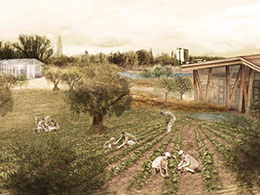
09 June, 2015
Model urban agricultural park
The subject of our Diploma project is creating a model urban agricultural park, in Botanikos area.
Students : Papaspiros Alexandros, Sofroni Danai, Sotiropoulos Antonia
Professor : A. Papaioannou, St Stavridis, P. Vasilatos
N.T.U.A
Presentation date : February 2014
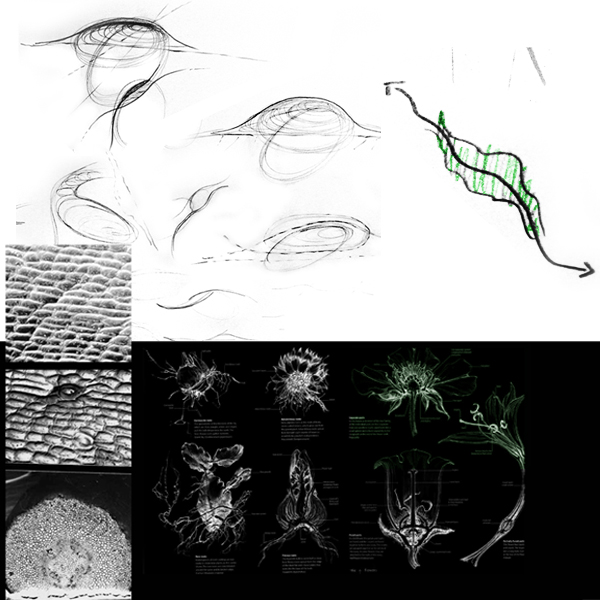
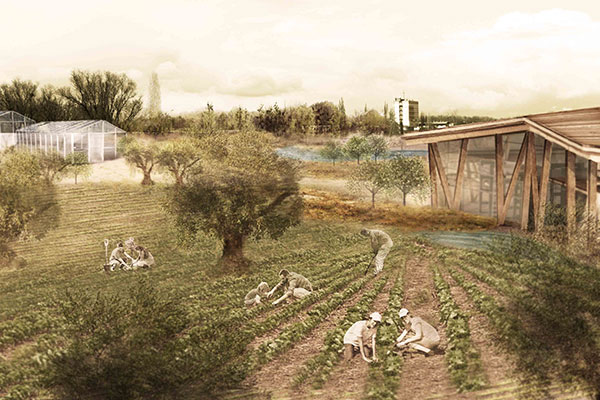
The subject of our Diploma project is creating a model urban agricultural park, in Botanikos area. Our park provides agricultural education both in theory and in practice. It also includes specialized uses of agricultural and botanical nature. Our proposal offers a positive alternative to the gentrification of the area, while respecting its historical course and geographical capabilities, as opposed to purely commercial existing scenarios.

ELEONAS
Eleonas is an unstructured, almost unknown area in the center of the Attica, with a special history and with physical properties that favor the development of crops. In ancient Athens, there is the sacred olive grove, which is converted to vegetable cultivations in the 18th century. During the 20th century the area is converted into an industrial zone but without appropriate infrastructure . From the 90s takes place the deindustrialisation of the area, leaving behind many deserted buildings. By 1991 Eleonas had not yet been registered in the urban plan. Today, despite several proposals for urban renewal, the area remains in a stagnant situation .
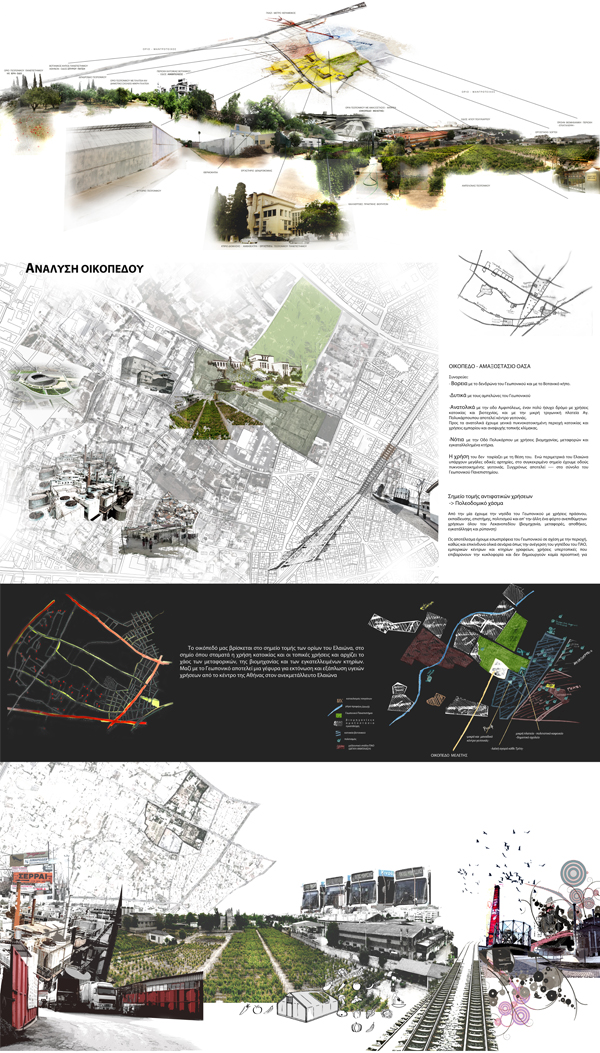
THE PLOT
Our plot is located on an intersection of conflicting land uses. On the one side there is residence and the Agricultural University with land uses of agriculture, park , education and science, and on the other side there is a load of unwanted uses (transport, industry, abandonment). The diversity of the premises that surround the plot reflect the problems of Eleonas.
As a result there is an introversion tendency by the Agriculture University , which leads to isolation and degradation of the area. Hazardous scenarios are being proposed, such as the construction of the Stadium of PAO, shopping centers and office buildings. Such proposals do not pose any potential for creating a liveable residential area.
Our proposal opposes this commercial development and adds a new place of interest in Attica while enhancing the green network. Our park in cooperation with the Agricultural University could be a bridge for expansion and spread of healthy activities from the center of Athens to the unexploited Eleonas region.


THE PARK
Crucial for the design was the connection of the Agricultural University to the city and neighborhood . We use the dynamics of the plot, its shape and position to make it function as a " connector ", expanding the activities of the Agricultural University, while giving a positive scenario for the area . To achieve this union, the park must "flow" and its form should be organic and liquid.
There is a central path of movement coinciding with the diagonal of the plot, which connects the neighborhood and the Agricultural University (local and supra-local connection). On either sides of the main path, four pieces of land for agriculture are being distinguished, which include the use of education and practice.
Using ellipsoidal forms, which result from lines connecting the entrances of the park and the urban tissue,we design four pieces of arable land. Then, by smaller oval shapes that intersect with these plots, the boundaries of the park are formed. On these intersections one can encounter endemic herbs. The trees promote harmony and continuity between human habitation and the natural world and consist a vertical and horizontal barrier to pollution .
We also propose a pedestrianization of Sidirokastrou Str. and Amfipoleos Str. for a smooth transition from the neighborhood to the park. These streets are of very low traffic.
To create open and semi-open spaces, we use wooden shelters, which sometimes coincide with the natural boundaries, following the movement of the park.
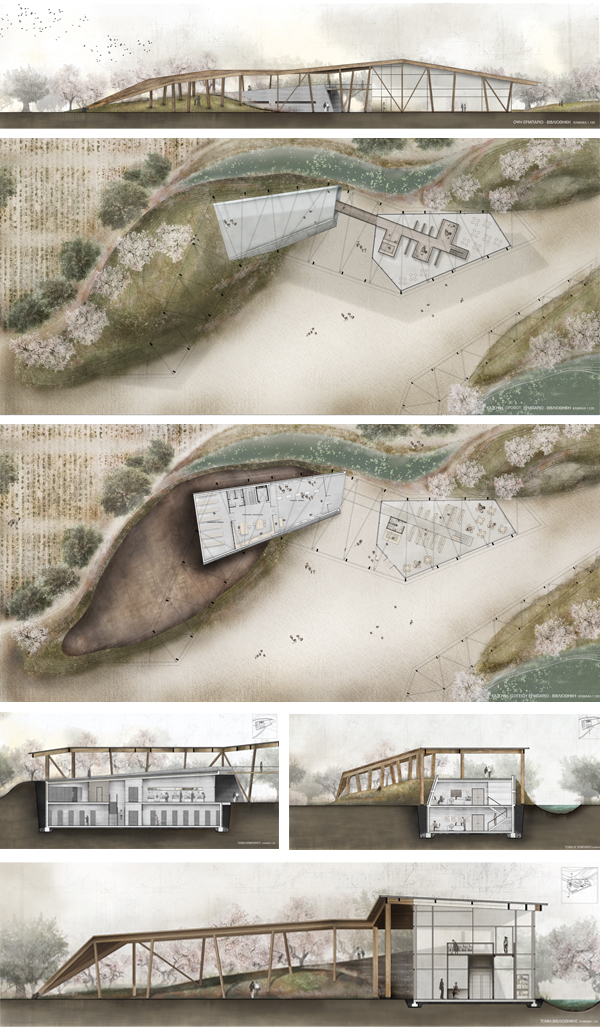
At the junction of Amphipoleos and Ag.Polycarpou Street, where there is also a small neighborhood center, we place the main entrance. A flea market can be organized freely on the main axis of the park. The market can be combined with the eko-festivals so to contribute to the local and supra-local nature of the park.
The built premises ‘'flow'' and emphasize the main movement. There is a gradience of publicity from the main entrance to the point where we connect with the Agricultural University, from the most public uses to the more exquisite ones. Buildings are placed under the wooden shelters so that they connect with semi-open spaces.
Depending on the nature of the buildings, we separate them into two groups with different architectural vocabulary. The public uses are housed in lightweight wooden structures with view to the landscape and their entrances face the main path. The scientific buildings, because of their specificity and the stringency of their standards, correspond to strict lines and solid materials. They are covered in spots from the soil of the hills to symbolize stability and the importance of the preservation of seeds and plants. They are made of reinforced concrete with small openings and special conditions of temperature and ventilation.
On the main path, the buildings are located as follows: The first building we see is a small grocery addressed directly to the neighborhood and an info point with information on the activities of the park. Then there is a restaurant with view on the lake, while on the opposite is the library and herbarium, which are arranged around a central square, the core of the park. The last building we see is the Seed Bank, which is also the end of our journey. In each of the four pieces of agricultural land there is a corresponding laboratory. The simple form and construction symbolizes the stability of human activity.
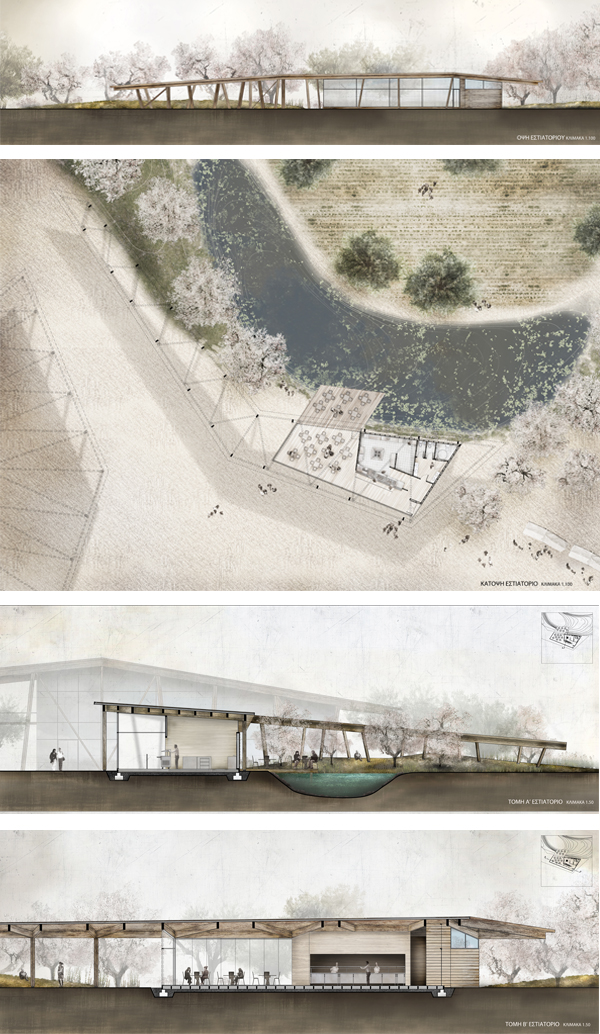
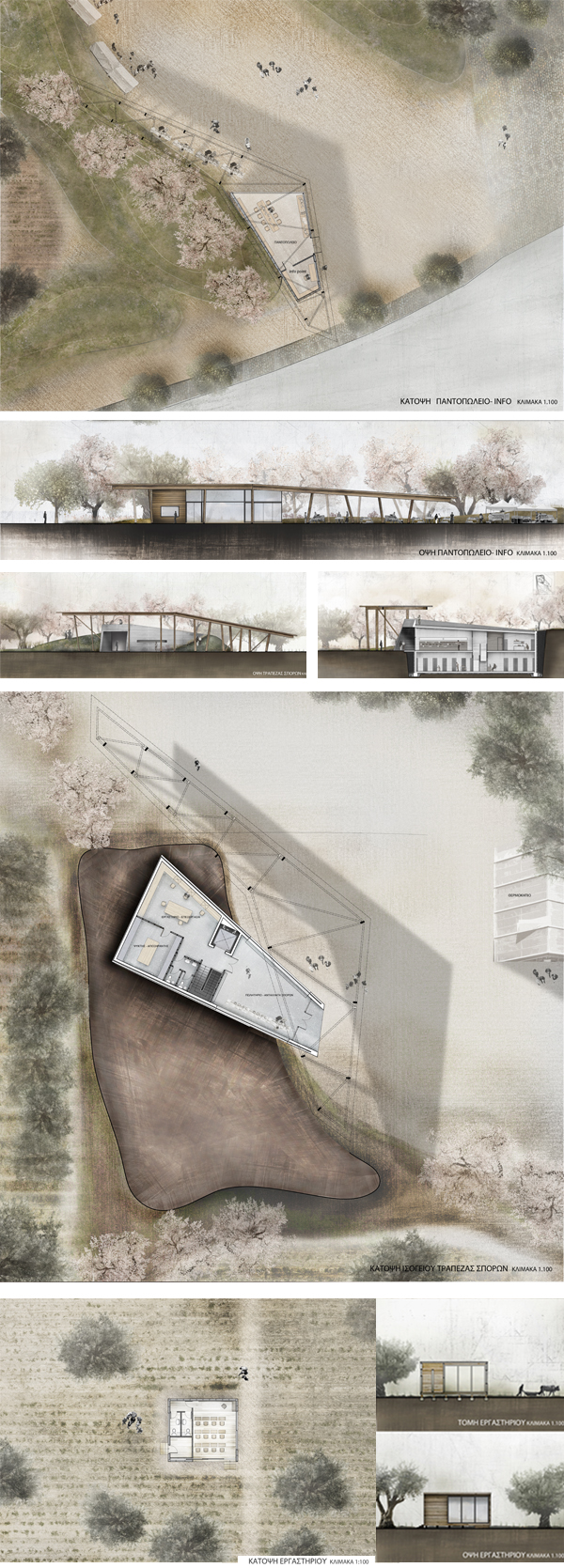
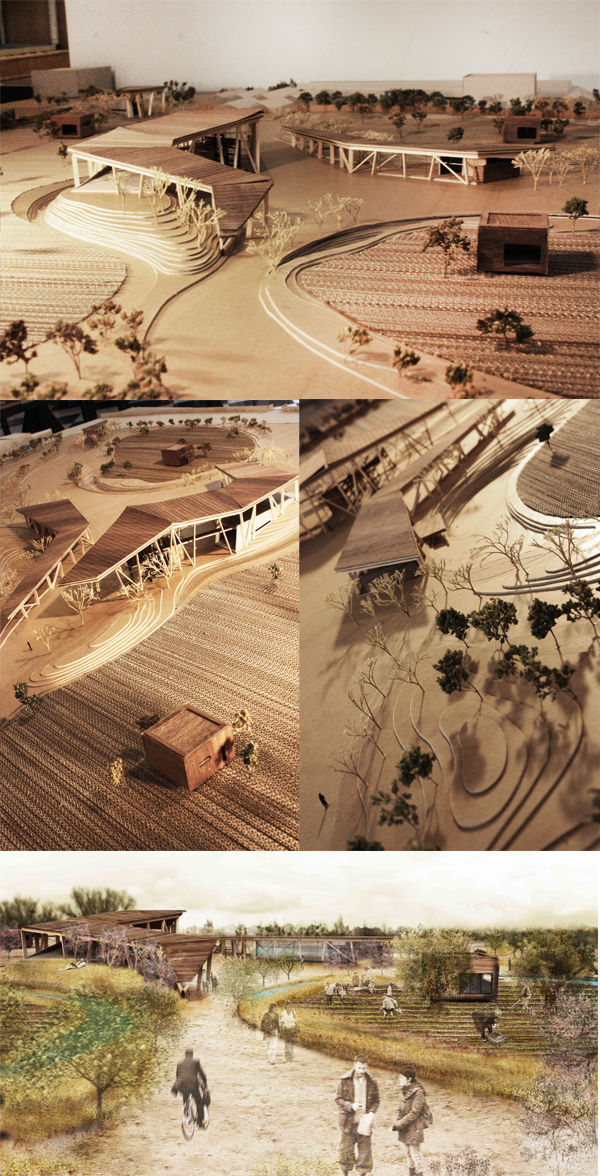
Related articles:
- Architectural experimentations in the public. ( 07 January, 2009 )
- Art Center in Lamia ( 17 October, 2010 )
- Μemory hole ( 31 October, 2010 )
- A4: Cutting, Folding, Joining ( 10 January, 2011 )
- Crescendo creators ( 17 September, 2011 )
- “Paramana” Square ( 04 July, 2011 )
- Madrid RIO ( 25 August, 2011 )
- Formation of Central Nikis square, Kozani ( 23 July, 2011 )
- Architectural Competition for the Redesign of the old GSP Area (κ.71117) ( 06 December, 2011 )
- Metropolitan Park in Thessaloniki ( 20 December, 2011 )
- Architectural Competition for the Redesign of the old GSP Area ( 07 January, 2012 )
- Redesigning Klafthmonos Square ( 26 April, 2013 )
- Μultilayered square in Fira, Santorini ( 30 April, 2013 )
- Redesign of the Makedonomachon Square. Subway station ‘Agia Sofia’ ( 18 May, 2013 )
- Next station : Zografou station – Gardenia square ( 08 June, 2013 )










